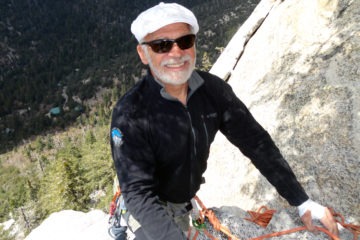Leave No Trace: Three little words, a common mantra in the outdoor recreation world, that capture a big concept.
First, some background. The roots of the national Leave No Trace (LNT) program stretch back to the 1960s, when the popularity of camping, hiking and backpacking on public lands was on the rise. By the 1980s, the U.S. Forest Service had developed “No Trace” brochures about minimizing impact in outdoor recreation. In 1991, the National Outdoor Leadership School (NOLS) led the first Master LNT Educator Course; the nonprofit Leave No Trace, Inc., now the Leave No Trace Center for Outdoor Ethics, was established in 1994.

As one of the LNT Center’s partner organizations, we’re dedicated to sharing no-trace ideas through the programs we offer in the park. Our Outdoor Adventure leaders educate participants on how to minimize their impact while hiking and backpacking, and our resident naturalist, LNT Master Educator Pete Devine, teaches training courses in Yosemite for aspiring LNT experts.
Whether you’re heading to the park for the fiftieth time, or planning your first visit, it’s always good to brush up on your LNT skills before you go! We put together a few tips for how to be a no-trace ace.
Before you go, make a plan. Grab a map and chart a route, whether you’re sticking to the Valley or heading off for a multi-day trek. Pack only what you need, and try to limit disposable packaging.
While you’re there, minimize your impact on the landscape and life around you (including your fellow park visitors!):
– Stay on trail when you can, and stick to durable surfaces (such as rock, sand or gravel) when you can’t.
 – Protect bears and other wildlife by storing food in lockers or canisters and keeping a safe distance from any animals you encounter, no matter how cute or curious they are.
– Protect bears and other wildlife by storing food in lockers or canisters and keeping a safe distance from any animals you encounter, no matter how cute or curious they are.
– Respect the wilderness experience of others, by keeping noise levels to a minimum and moving off trail (to durable surfaces!) for snack and rest breaks.
– Dispose waste properly — yes, all waste. Put trash and recycling in the right receptacles (or even better, pack it out!), and bury human waste at least 200 feet from water and trails.
– Take pictures, not plants. Did you know it’s illegal to collect plants in national parks without a permit? From an ecological standpoint, picking a wildflower doesn’t just mean plucking a few pretty petals — it can also mean taking away the seeds that would have produced the next year’s blooms.
– Leave nothing. And if you can, leaving the place even more pristine than you found it. Our Outdoor Adventure leaders and participants often help pick up trash along the trails and remove discarded gloves from the base of the Half Dome cables. Pitch in by carrying a spare bag in the side pocket of your pack to hold any litter you find along the way.
When you leave, make sure, one more time, that you’re leaving nothing behind, and taking nothing with you — that includes plant seeds that might have ended up on your boots, clothes or tent. Clean off your gear to avoid inadvertently giving invasive seeds a free ride to a new habitat.
Want to learn more? Join us for an Outdoor Adventure in Yosemite, check out additional trail tips and backpacking basics, and test your LNT skills with our “Keeping It Wild” quiz. Now go forth and tread lightly!



